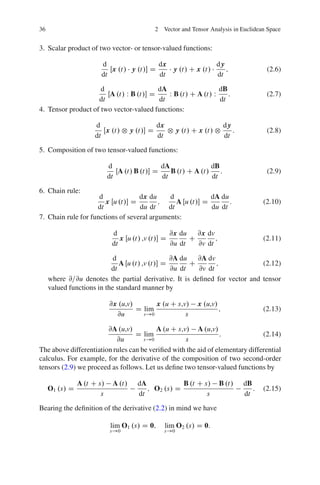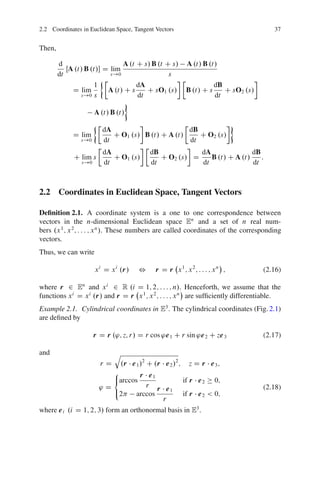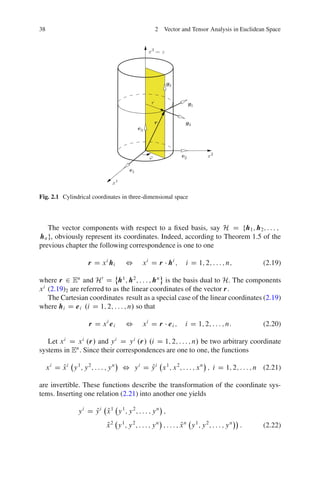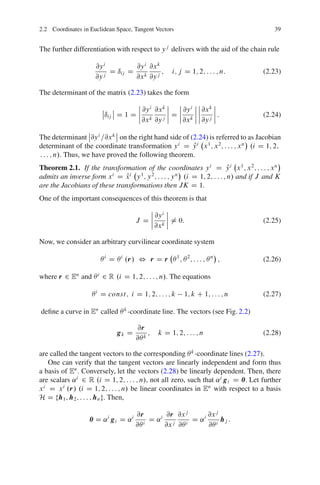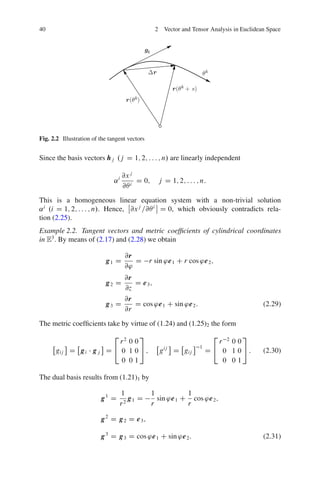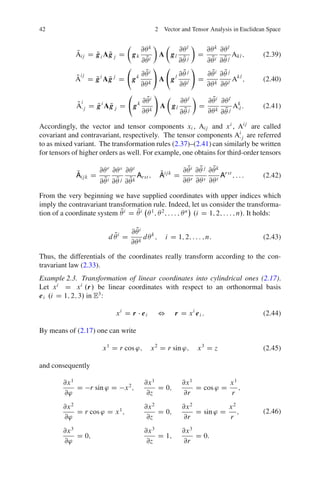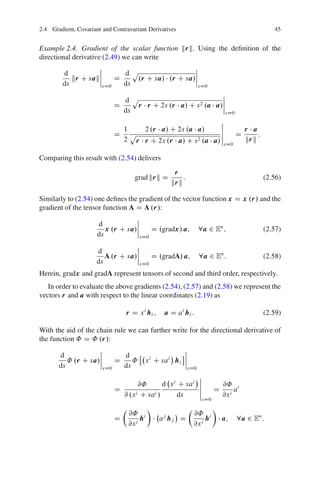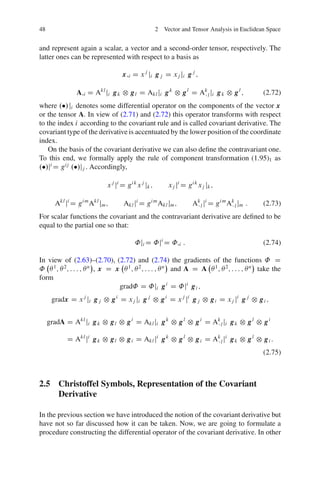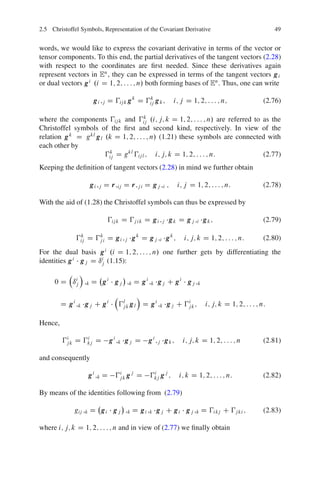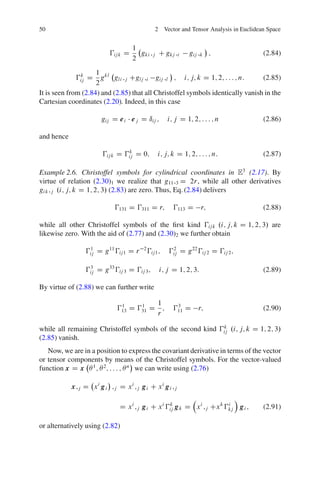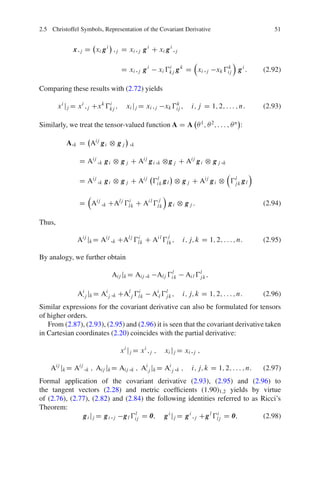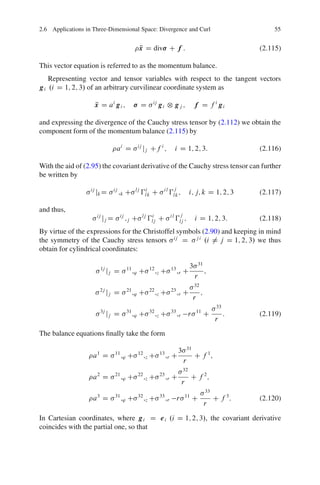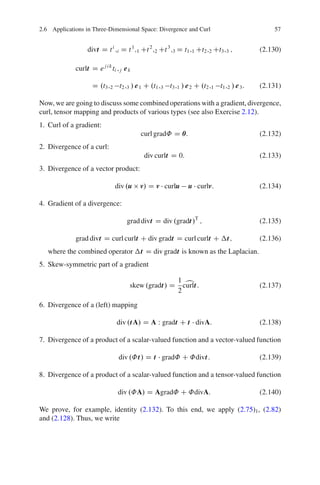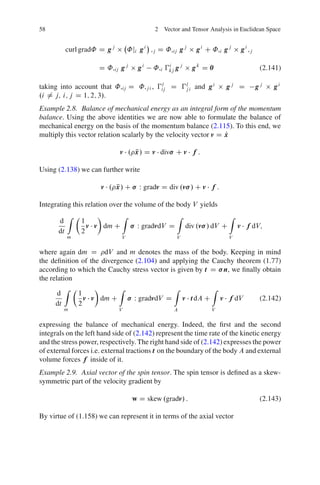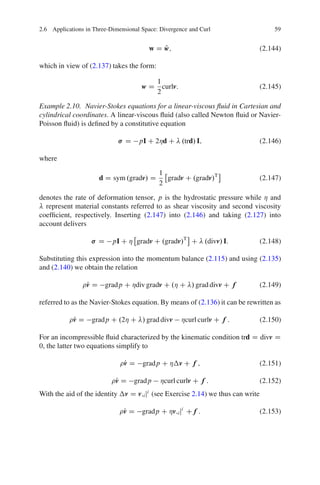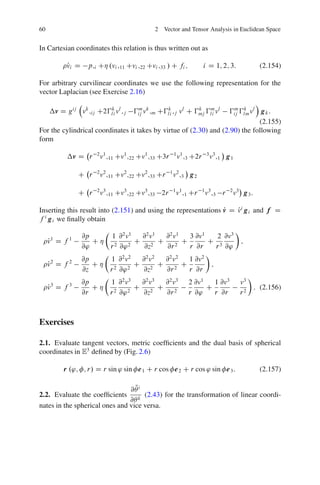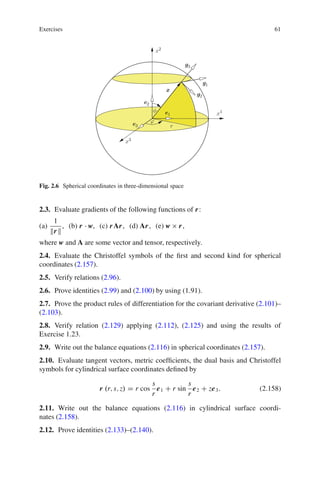This document discusses vector and tensor analysis in Euclidean space. It defines vector- and tensor-valued functions and their derivatives. It also discusses coordinate systems, tangent vectors, and coordinate transformations. The key points are:
1. Vector- and tensor-valued functions can be differentiated using limits, with the derivatives being the vector or tensor equivalent of the rate of change.
2. Coordinate systems map vectors to real numbers and define tangent vectors along coordinate lines.
3. Under a change of coordinates, components of vectors and tensors transform according to the Jacobian of the coordinate transformation to maintain geometric meaning.

